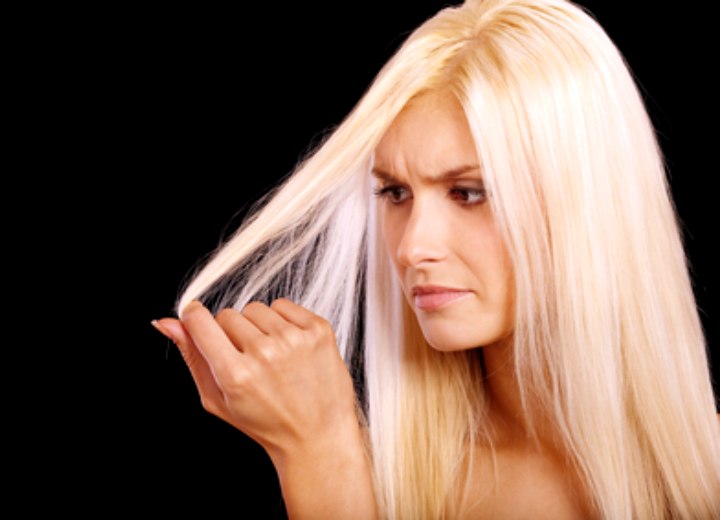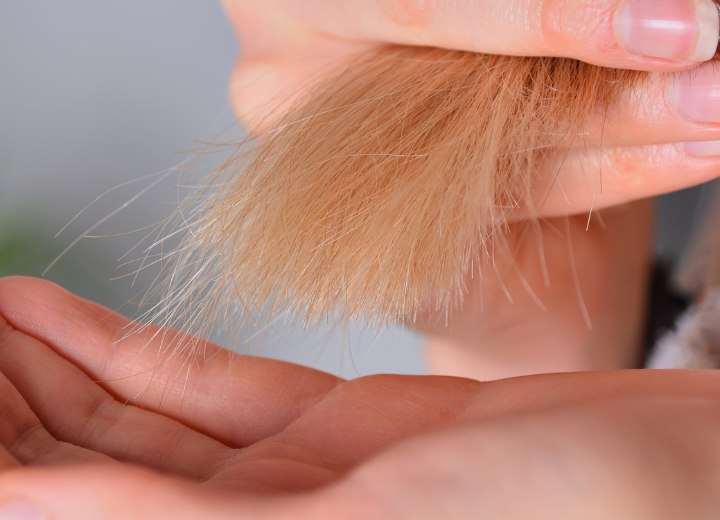Hair Bleaching Problems

The reason hair bleaching should be left to professionals is that, by the very nature of the process, the hair is treated with a chemical whose purpose is to disperse the pigment molecules in the hair shaft. In doing this, the chemical reaction also damages the protein bonds within the hair and reduces its structural integrity. Add to this that everyone’s hair responds differently, and factors such as porosity, body temperature, outside temperature, and lack of attention can all add up to disastrous results.
Hairdressers have to go through specific training under guidance to learn how to judge and apply these mixtures. They practice their initial attempts at the process using manikins that cannot be physically harmed, although, in my school, there were more than a couple of manikins who ended completely bald due to some bleaching mistakes by novice hairdressers.
Yet, some women (and men) insist on doing this process themselves, and then wonder what went wrong when something unfortunate happened. So, for the sake of information, let's look at some of the complaints I've had from people who took matters into their own hands and paid the price for it:
I bleached my hair at home and now it’s breaking off, what did I do wrong?
There are a number of things that could have "gone wrong" but the most likely candidate is that you over-processed your hair. Now, you may have gotten the exact color result you were aiming for, but you probably didn’t know enough to realize that your hair wasn’t in a condition to achieve that color goal. Or, you may not have realized that the peroxide/bleach mix you used was too strong for your hair texture.
The bottom line is that you’ve destroyed enough of the hair’s structural integrity to leave it brittle and dry, and rough.

You will be advised to avoid heated drying and thermal styling tools for the duration so that your hair can regain some measure of its structural integrity. However, don’t be fooled, your hair will never be the same until it regrows and is replaced by new growth. The best you can do is "fix it" the way you might repair broken pottery.
After bleaching my hair, it feels slimy and spongy whenever it gets wet. What’s wrong with it?
This is another symptom of major hair damage. The hair feeling slimy and spongy when wet, means that its structural integrity has been compromised. At this stage, the hair is likely already breaking; already feels like straw when it's dry; and will not retain color.
Professional solutions: As with the question above, you need your professional stylist to try and start reparative treatments, like protein packs and deep conditioners. And as before, the best you can hope for is to try to keep the hair intact until it grows out.
I bleached my hair and now my scalp is sore and red. What could have caused this?
What you have are one to two likely reactions: chemical burns to the scalp, or an allergic reaction/sensitivity to the chemical process of the bleaching. Depending on how sensitive your skin is, they are essentially the same. If you used a powdered bleaching agent you likely failed to understand that these are classified as "off the scalp" bleaches and are not intended to come in contact with the skin – especially not the delicate skin of the scalp.
You probably have some scabbing and flaking depending on how long it has been since your bleaching process, and the scalp is probably very sensitive to the touch.
Professional solutions: Depending on how severe the condition is, your stylist may send you straight to your doctor. And, frankly, it may not be a bad idea to visit your doctor anyway. You will likely be advised to avoid harsh shampoos and any styling products until the scalp heals, and if you visit the doctor you may get a medication for use on the scabbed areas to allow the wounds to heal faster and prevent infection.
You will need to be extremely careful when trying to comb or brush the hair, since you want to avoid scratching or cutting the scalp and thus risking infection. You may even be advised to use an antibacterial shampoo to keep the risk of infection caused by buildup of scalp oils at a minimum.
Continue reading ...